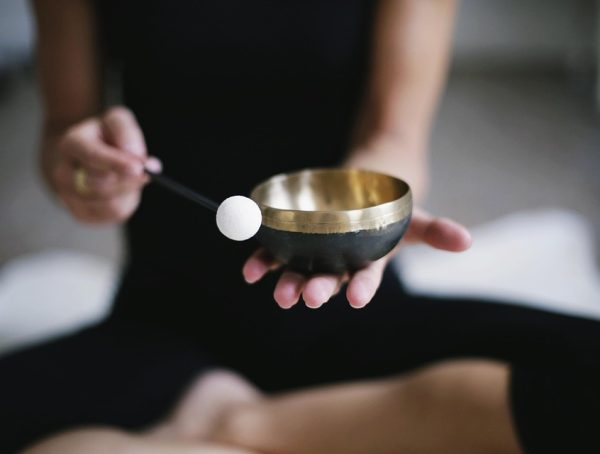Which Type of Meditation Is Right for You? A Look at 12 Methods
In a fast-paced world filled with distractions, stress, and overwhelming responsibilities, many individuals are exploring ways to cultivate mindfulness and inner peace. Meditation, an ancient practice that has gained significant popularity in recent years, offers numerous benefits, including reduced stress, increased focus, and enhanced emotional well-being. However, with various meditation methods available, it can be challenging to determine which one suits you best. In this article, we present twelve different types of meditation along with action steps to help you discover your ideal practice.
1. Mindfulness Meditation
Mindfulness meditation emphasizes being present and fully engaged in the moment without judgment. It typically involves focusing on your breath and letting go of distractions.
Action Step: Spend five minutes sitting in a comfortable position, paying attention to your breath. Focus on how it feels as you inhale and exhale, letting any stray thoughts drift away.
2. Transcendental Meditation (TM)
TM is a technique that involves silently repeating a specific mantra to settle into a profound state of rest and awareness. Its practitioners often report increased clarity and emotional resilience.
Action Step: Find a quiet space and select a mantra that resonates with you (like “peace,” “love,” or another positive word). Dedicate 15-20 minutes to quietly repeat this mantra in your mind.
3. Loving-Kindness Meditation (Metta)
Loving-kindness meditation cultivates feelings of love and compassion, first toward oneself and then extending these feelings to others. This method encourages emotional connections and builds empathy.
Action Step: Start by focusing on yourself. Repeat phrases such as "May I be happy, may I be healthy" and then gradually extend these wishes to others, including loved ones and even those you find challenging.
4. Guided Meditation
In guided meditation, an instructor leads you through various visualizations or relaxation processes. This method is particularly beneficial for beginners seeking direction.
Action Step: Visit a meditation app (such as Headspace or Calm) and select a guided session that resonates with you. Set aside time daily to listen and follow along.
5. Zen Meditation (Zazen)
Zen meditation involves sitting in a specific posture and observing thoughts and sensations as they arise and pass away. This method emphasizes self-discipline and mindful observation.
Action Step: Find a quiet space, sit in a comfortable position (preferably a cross-legged posture), and spend 10-15 minutes observing your thoughts without judgment.
6. Body Scan Meditation
A body scan meditation focuses on systematically bringing awareness to various parts of your body. This practice promotes relaxation and helps individuals connect with their physical state.
Action Step: Lie down comfortably and mentally scan your body from your toes to your head. Spend a few moments on each area, noticing any tension or sensations and letting them release.
7. Vipassana Meditation
Vipassana, which means insight or clear seeing, is one of the oldest forms of meditation. It encourages practitioners to observe thoughts, feelings, and sensations to gain deeper insight into the nature of reality.
Action Step: Dedicate 30 minutes to focus on your breath, observing any thoughts that arise, and allowing them to pass without attachment or aversion.
8. Chakra Meditation
Chakra meditation focuses on the body’s energy centers (chakras), aiming to promote balance and harmony. This method often aligns with the principles of yoga.
Action Step: Sit comfortably and spend time visualizing each of the seven chakras, starting at the base of your spine and moving to the crown of your head. Envision each center glowing and vibrating.
9. Movement Meditation
Movement meditation incorporates physical activity, such as yoga or tai chi, where the focus remains on the flow of movement and breath. It’s ideal for those who find stillness challenging.
Action Step: Try a beginner yoga class or a Tai Chi session. Focus all your attention on the movements, breath, and the sensations in your body.
10. Sound Meditation (Nada Yoga)
Sound meditation utilizes music, chanting, or specific frequencies to promote relaxation and concentration. This method can be particularly healing for those who enjoy auditory meditation.
Action Step: Create a playlist of calming or meditative music. Spend 20-30 minutes listening and immersing yourself in the sounds, releasing any other thoughts.
11. Visualization Meditation
In visualization meditation, individuals create a mental image or scene, often focusing on peaceful or empowering settings. This method fosters creativity and positive thinking.
Action Step: Spend a few minutes sitting quietly and imagining a serene place—perhaps a beach or forest. Engage your senses: what do you see, hear, and feel in this space?
12. Prayer Meditation
Prayer meditation combines prayer with reflection. It may involve spoken or silent prayers and encourages a connection with a higher power.
Action Step: Sit in a quiet place and express your thoughts, hopes, and gratitude in prayer. Focus on the feelings that arise and listen for inspiration or insight.
Final Thoughts
Finding the right type of meditation may take time and experimentation. It’s essential to approach this journey with an open heart and mind. Begin by trying out a few of the methods mentioned and observing how each makes you feel. The goal isn’t perfection; it’s about personal growth, self-discovery, and nurturing your inner self.
Remember: "The mind is like water. When it’s turbulent, it’s difficult to see. When it’s calm, everything becomes clear." — Prasad Mahesh.
If you found this information helpful or inspiring, be sure to follow Kevin on Instagram (@KSteineman) for more tips on mindfulness and personal growth!
You might also like
More from Meditation
The Role of Mantras in Transcendental Meditation: A Deep Dive
The Role of Mantras in Transcendental Meditation: A Deep Dive Transcendental Meditation (TM) has garnered a significant following across the globe, …
The Science Behind Meditation: Improving Mental Health Naturally
The Science Behind Meditation: Improving Mental Health Naturally In today's fast-paced world, the pursuit of mental wellness has become paramount. Thousands …
Understanding the 7 Types of Meditation for Beginners
Understanding the 7 Types of Meditation for Beginners: A Path to Inner Peace Meditation has become a popular practice in recent …


































